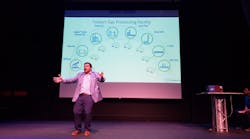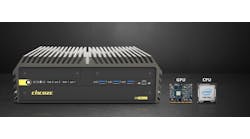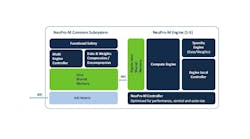What are we going to do with the technology, asked Peter J. Photos, Ph.D., chief scientist and executive vice president at Streamline Innovations at the 'The edge of glory: Building intelligent systems of the future—today' breakout session at the 2019 Ignition Community Conference (ICC) in Folsom, California. He certainly laid out some limitless possibilities, the theme of the ICC, during this session.
Photos' discussion was really about the future. Using an oil & gas process in his example, but it could be any machine or process, there are many pieces of equipment used. However, at the current stage of technology, Photos notes there is maybe one PLC across a typical gas processing facility and about 40 I/O points in each, similar to a station on an assembly system.
"Imagine, in the future where all the pieces in a gas processing facility or manufacturing system are smart; not just controlled, but smart," says Photos. "But here's the problem. We all hear about what the future is, what we're going to be doing and all these great technologies that people are on the edge of doing, but where is where is automation going?"
There are two options. "We could boldly go where no one has gone before," says Photos. "We could do all these incredible or amazing things and build some super-high technologies that are completely automated. Alternatively, we could 'go gentle into that goodnight' and make some incremental changes and improvements to take little steps forward, so in 20 years, we are just slightly father ahead of where we are currently at."
While its story is long, Streamline Technology is a start up about two years old in San Antonio Texas. It makes equipment that uses a pure chemical reaction to remove Hydrogen Sulfide (H2S), an extremely toxic gas, that is found in the natural gas produced in about 40% of the wells. They design, build and integrate equipment to remove this toxic gas as well as manage these process during operation.
The equipment uses two chemical reactions to remove the H2S. One converts the H2S to sulfur and the other converts the spent chemistry and regenerates it. Both reactions need to be controlled very carefully, but the process equipment is installed in remote locations, 50 miles from nowhere.
What's Streamline's secret sauce? "We have a control system that we made smart," says Photos. "And we have Ignition SCADA by Inductive Automation in the middle with MQTT sending the information to a cloud server and remote access."
We had about 10 or 20 grand to create the control system, continues Photos. "The traditional setup includes a plant, a PLC and an HMI, but there is a problem with this," he says. "We are doing exquisitely tight control of chemical reactions. The PLC did an okay job but it was very inefficient. And every time it went down, someone had to get in the car and drive an hour to restart it."
The control system needed to get better. "We installed Ignition and we were in business," says Photos. "We got real-time data and immediate alerts as soon as the system went down. But we were missing a few things. We needed better control of the system, the process was still inefficient. The system needed brain power."
Adding brain power was the next step, so Streamline installed a Moxa PC box which was a cost effective and capable embedded computer and gateway with cellular support that runs Ignition Edge. "And there was room on the device to run other things," says Photos. "We could write Python scripts to better control the process. The calculations were not PLC friendly. It was not just a PID loop or plus or minus output. It was a two-variable linear algebra equation. Simple to solve on paper on in a script, but not so simple in a PLC."
The system collects and displays 300 to 400 real-time data points. It has full historian data. There is also full, bi-directional control available through an app on a mobile device which can start and stop the unit and change set points.
"But what's cool is the system is smart," says Photos. "When it goes down, it sends a text message to the operator who can restart the unit, remotely. Cybersecurity aside, the control room is my PC or an app on my phone. It's the full HMI with access to all the historian data that the users and operators can use. There are also some "canned" reports and trends in the system to help with day to day operations."
With a little intelligence and bi-directional control using Ignition Edge and Python script, Streamline made the control a little smarter. "Our uptime went from 95% to 99% using this brain power, cloud data and remote access," says Photos. "We take a middle size plant, we install a PLC, a Moxa box, Ignition Edge and now we have some intelligence. And boy do we have room to grow."






